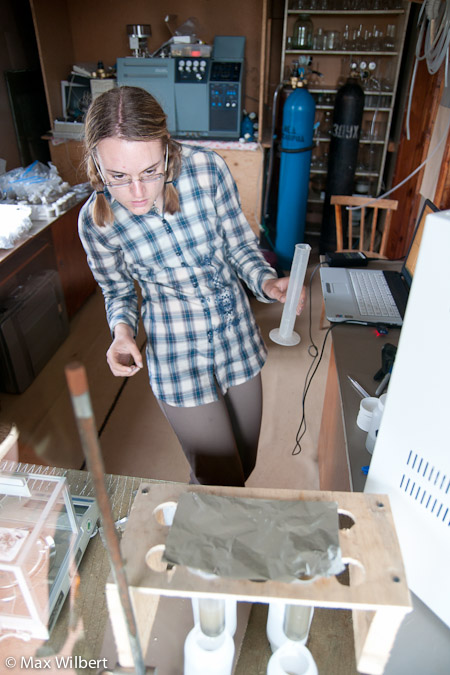Hi everyone! As of late, those of us working with soil have been busy with making soil extracts. Sam’s earlier post gives an indication as to our all-hours filtering schedule, so I’ll write more on what we’re doing and why we’re doing it.
Soil contains lots of “stuff”- plant material, leaf litter, roots, minerals, and organisms among other things –that can contribute nutrients to the environment. In particular, I’m looking at the nutrients soil can contribute to water. In order to take the nutrients out of the soil and into water to measure them, we need to create soil extracts.
The process is, in a phrase, time consuming. First, we clean one and a half liter bottles (in my case, $80 worth of water bottles) with a weak HCl solution to get rid of anything which can contaminate our samples. Then, we add a mixture of 10 mL water to 1 g soil to our bottles and give them a good, half hour long shake to “free up” and release the nutrients. After letting them settle overnight, we undertake the surprisingly long (up to 5 hours a sample) process of filtering out the soil particles, leaving us with nutrient-enriched water we can test and use for
experiments.
I’m testing my soil extracts for their biological “reactivity” in local aquatic ecosystems. The method I’m using for this is a BOD, or biological dissolved oxygen, test. In a BOD test, I mix my soil extract with water from the Kolyma River and place it in a tightly sealed bottle. The amount of dissolved oxygen is measured at different time intervals. From the changes in dissolved oxygen concentration, it’s possible to calculate how much carbon the microorganisms are “eating” and the levels of bioavailable nutrients in the soil extracts. This morning I prepped 98 of these bottles, and they’re currently incubating while I await results.
In addition to the BODs, I’m getting levels of nutrients measured using through water quality tests. Our PIs John and Kate do a fantastic job of keeping up with the influx of soil extract samples they’ve been receiving from us today, and it’s been great to have almost real-time nutrient data.
It’s been a busy last few days here at the station. We’ll keep you posted!
PS- To my friends and family, sometimes the internet here doesn’t send e-mails. But I’m alive and well and enjoying my time here.




